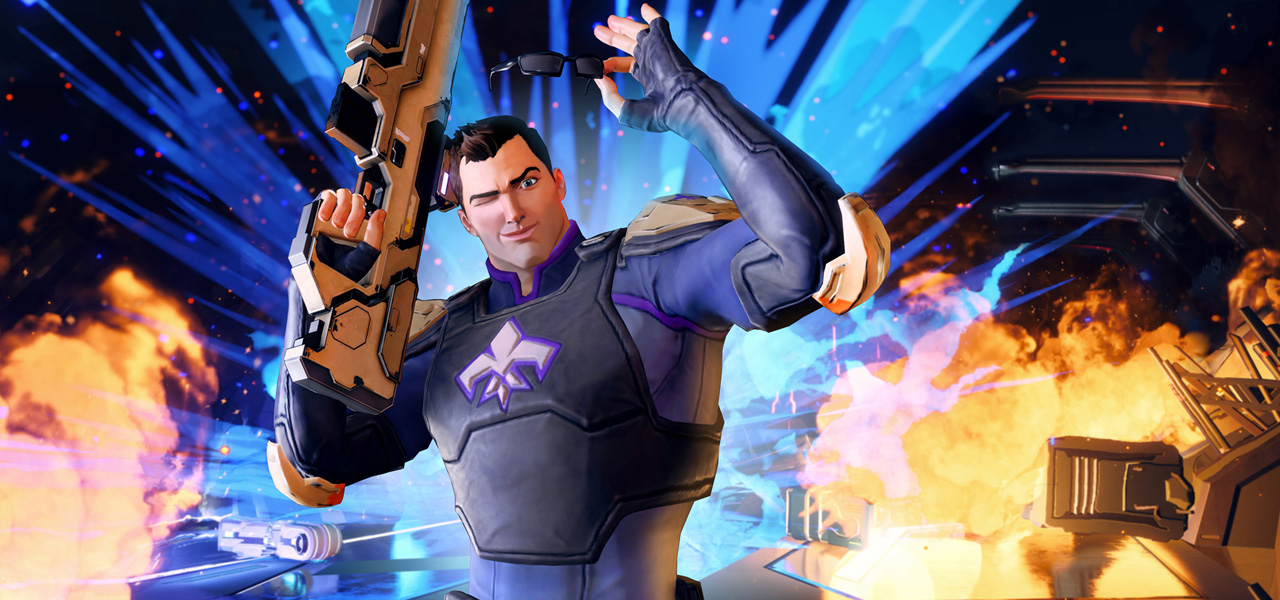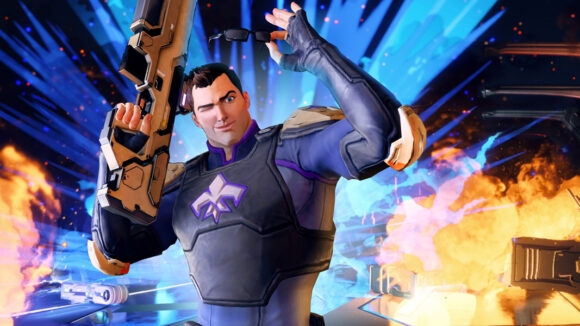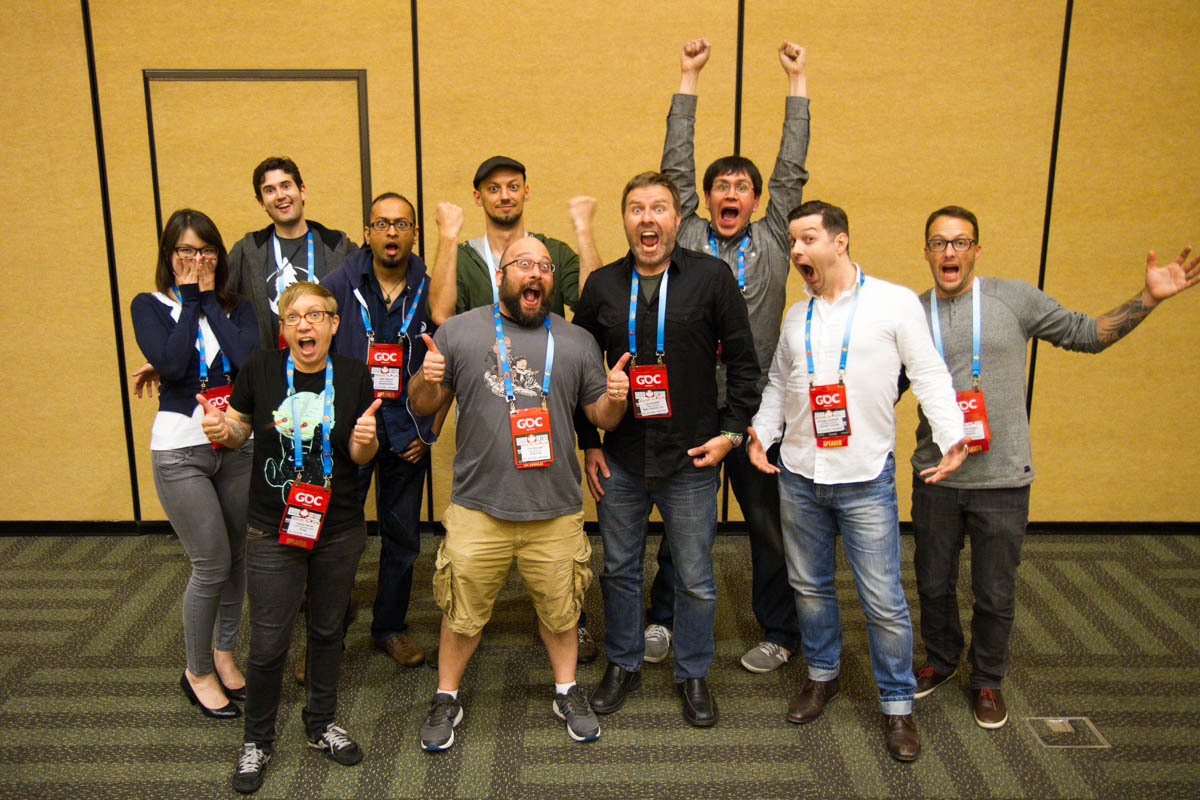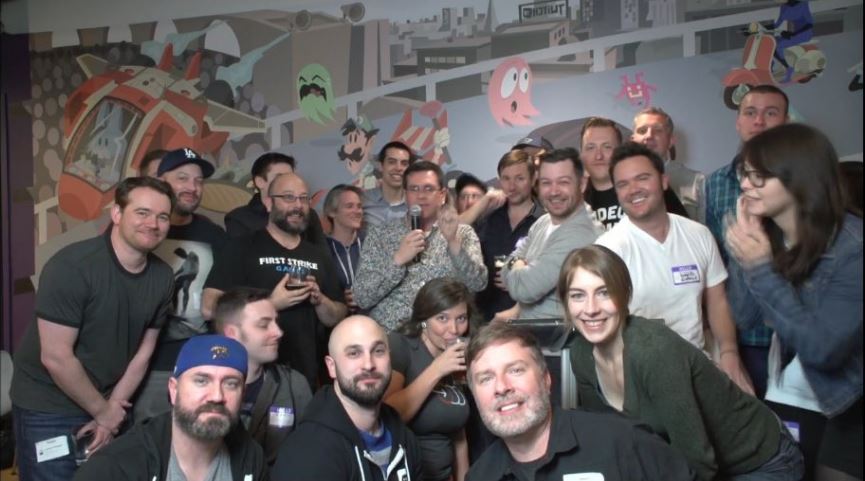

Looking to Get Into Animation For Games? The Community Is Out There, And It’s Growing
For anyone looking for ways to use their animation skills away from traditional linear projects, such as getting into game animation, there’s a growing community already out sharing knowledge amongst animators.
Two examples include the Animation Bootcamp held at the Game Developers Conference, and a related event called Animation Exchange. Mike Jungbluth, a lead animator at games studio Deep Silver Volition, is involved in both. He’s also an advocate for helping animators learn more about their craft and connecting with others in the field.
Cartoon Brew finds out from Jungbluth what’s happening right now in the games animation community, what cross-over exists between animation in more traditional linear forms and in games, and more on the Bootcamp and Exchange events.
The game animation community
Jungbluth is a co-creator of the AnimState network, a website where he is placing roundtables and podcasts with industry professionals. He is also one of the co-founders of the Animation Bootcamp, an event at the Game Developers Conference (GDC) each year. It’s a full day of sessions from animators on AAA and indie game titles. This year the Bootcamp was followed with another full day discussion called the Animation Exchange, in which speakers from Blizzard, DICE, Epic, Naughty Dog, Riot, and Ubisoft, among others, participated in a live-streamed event.
The Animation Exchange sessions were live-streamed over eight hours and embedded below. They included Q&As, talks such as a ‘What Schools Aren’t Teaching You’ and ‘An Intro to Animation in Unreal Engine 4’, along with several other practical talks and guides.
“The community for game animation has really exploded in the last five years,” said Jungbluth, who has more than a decade of experience in games on such properties as Shadow of Mordor, Call of Duty: Black Ops, Singularity, and, currently, Agents of Mayhem. “I like to think the work we have done with the Animation Bootcamp and now the Animation Exchange to give voice to animators has played a big role in that. But as the overall quality of game animation has increased, the desire to reach out and share what we are learning has become all the more necessary and important.”
It might seem at first that the Animation Bootcamp and Animation Exchange are set up really just for those already in the industry – i.e. those who might already have a handle on animation for games. Indeed, Jungbluth says there are already a multitude of places you can go and learn about the technical side of animation for games, but he and his colleagues were finding that much of the conversation about the future of game animation was being driven at events like E3 from a marketing standpoint.
“So dedicating the Bootcamp and Exchange to a more knowledgeable audience was the solution, in helping to drive forward the industry in a more meaningful way,” he told Cartoon Brew. “And that has continued to pay off, as approaches are being shared more, future technologies are becoming more gameplay focused then celebrity casting focused, and luminaries in the field now have a stage to speak and be heard.”

How different is animation for games?
We asked Jungbluth what lessons he has taken away from these open discussions with the community he’s been having of late. One is about the difference between animation in games compared to animation for more linear forms of entertainment.
Anyone already involved in animation for games knows it is a big industry, and that it typically uses similar toolsets to feature film animation and visual effects. But it wasn’t always that way. As Jungbluth points out, “There was a stigma that game animators were either trying to use it at a stepping stone for film or couldn’t cut it for film.”
However, that’s no longer the reality as these digital content creation industries continue to converge. There’s a wider gaming community now and a sense that the technologies are pretty much on par. “As the technology and practices of interactive animation have allowed for the quality of game animation to increase, we are now starting to see more overlap in final quality of animations and performances,” said Jungbluth.
Plus, he points out, there are more and more resources on the internet, in terms of organized sites, including the aptly named Animator’s Resource Kit from Guerrilla Games animator Adam Turnbull.
Getting into game animation
If you’ve been working in more linear forms of animation, such as on feature films, and looking to transition into game animation, Jungbluth suggests that one of the major differences rests in ‘caring’ about the individual creation of each asset or the overall direction of a character’s performance.
“In linear narratives, you have defined shots you can spend days or weeks on, to get all the subtleties and nuances of the performance just so,” said Jungbluth. “Whereas in games, you often have entire suites of animation needed to be done for a character on your own, so leveraging every tool at your disposal from mocap to outsourcing to procedural technologies becomes all the more necessary. And being able to care more about the final performance/experience and letting go of each individual animation becomes a real strength.”
Above: an ‘Animation tricks of the trade’ session from the Animation Bootcamp in 2016.
Jungbluth says there is already plenty of crossover between game animators and animators working in more linear projects, noting that being able to give a good performance in either area is pretty much the same thing. The difference, however, is how much control an animator has and doesn’t have over a scene.
“Level designers are often in control of the staging of your animations,” Jungbluth noted. “The player is often in control of staging the camera for the player character. Anticipation for an AI is often defined by the needs of gameplay and less about the specifics of that action. And for the player, anticipation is often in the player’s head and on the press of the button, not in the actual animation itself, because it needs to be responsive. And follow through and overlap often need to either be able to be canceled out or driven by physics, again because of the needs of responsiveness.”
Game animators have similar challenges to other animators, of course, but some are specific to games. For example, a major challenge, according to Jungbluth, is “realizing your animations are not finished when you export them out of Maya.”
“Think of it like your animation is the dress rehearsal and how it plays in game is when the cameras are rolling. And also the audience can choose to jump up onto the stage at any point if they so feel like it. So that means understanding the gameplay design, and how they want to use that animation. Does it need to happen when they are standing, running, jumping? How do other characters in the world respond? How is the player expected to respond? What is being driven by animation and what is being driven by physics?”

What the future holds
It is perhaps no surprise that right now it looks to be in virtual reality where animators from traditional fields and game animators might meet. Jungbluth, in particular, is hopeful that the experiences of animators in vr will become part of the sharing process.
“I think vr is a great middle ground showing more linear-minded animators what viewer/player interaction can mean and how many of the tricks and approaches we have learned in games can be leveraged without sacrificing the overall quality of the experience.”

.png)